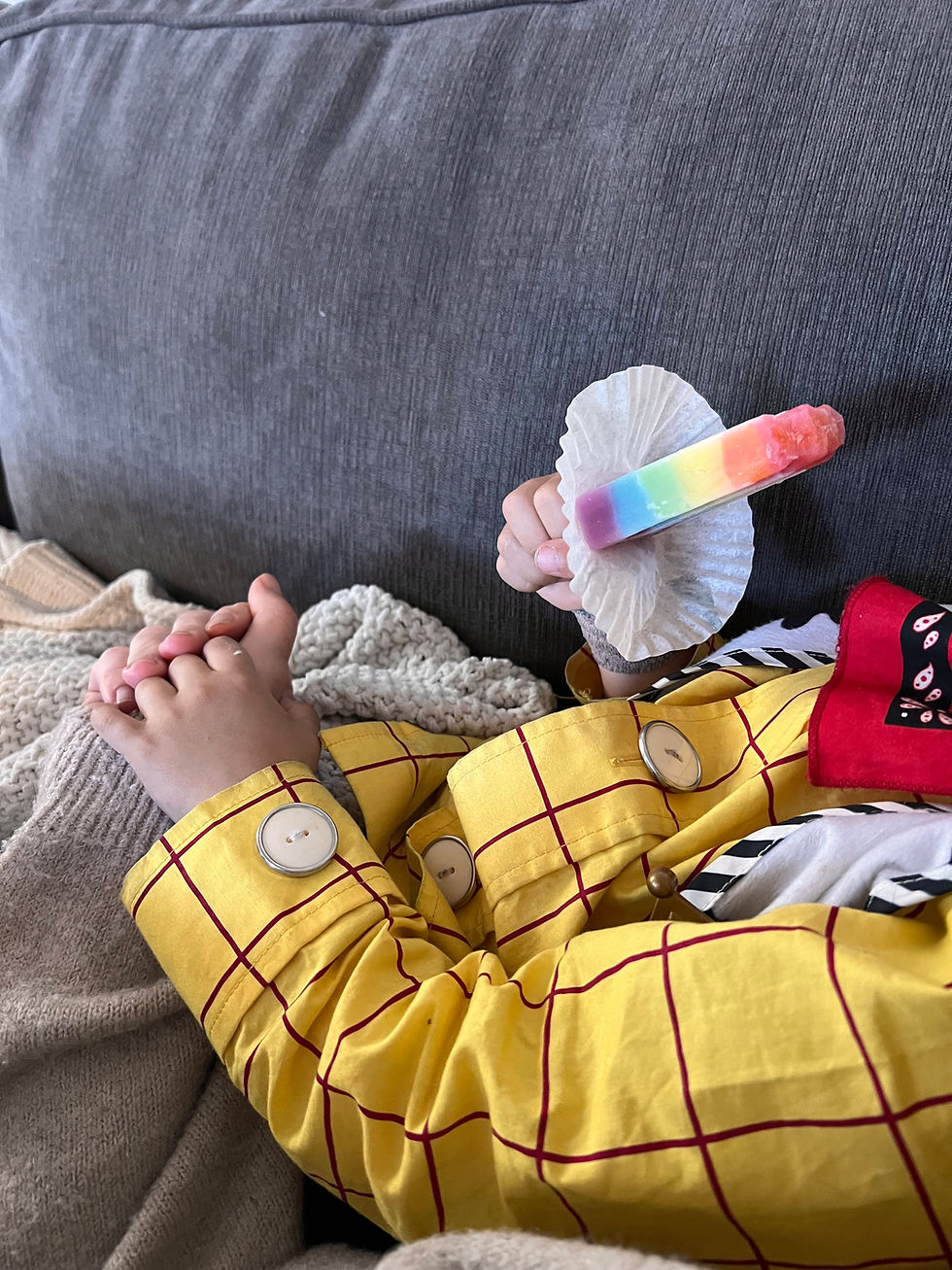Let’s Talk Summer Screen Time: How to Make It Work for Speech & Language Development
- Danielle Giarratano

- Jul 14
- 4 min read
Let’s have a real conversation about something that many families are juggling—screen time. As a parent of two toddlers, I know this topic can be quite challenging.
It’s summer, and our days are filled with activities. Sometimes, handing your child a device gives you a much-needed moment to focus on making lunch or just taking a deep breath.
And guess what? That’s totally fine! You’re not failing; you’re parenting.
What if I told you that screen time doesn't have to be a negative influence on your child’s speech and language growth? With just a few easy adjustments, it can actually be a helpful tool.
Let’s explore how we can make screen time a vehicle for building language!
Screen Time is about Quality Over Quantity
Not all screen time is created equal.
When selecting shows or apps, prioritize those that:
✔️ Encourage active participation (think sing-alongs or simple actions)
✔️ Use clear speech and slow, easy-to-understand language
✔️ Teach practical words your child can use every day
✔️ Choose shows that are not overstimulating (think older shows that have muted colors and less pictures/minute)
Engaging content can turn screen time into a constructive part of your child's learning journey. For instance, a show like “Bluey” not only entertains but also helps teach family interaction and everyday vocabulary. Bonus "Bluey" is not as overstimulating as many of the other shows currently out for kids.
Don’t Just Watch—Talk Together to Build Language
This approach is a game-changer.
Instead of zoning out while your child watches (which we all do sometimes!), sit next to them and engage:
Pause and ask questions. For example, after a cartoon scene, ask, “What is that cat doing?”
Repeat what they say and add more. If your child says “car,” you can respond with, “Yes! A fast blue car!” This helps them learn by expanding their vocabulary.
Connect screen content to real life. After watching a farm show, you could say, “Remember when we visited the farm and saw real cows?”
These simple conversations turn passive viewing into active learning. Remember it is all about connection!
Use Screens as a Springboard
Don't stop the conversation when the video ends.
If they watched animals, encourage them to pretend to be those animals. This play not only sparks their imagination but also enhances verbal skills.
If you saw a cooking show, set up a pretend kitchen together with toy utensils, incorporating new vocabulary like “stir” or “mix.” This links screen time to real-world experiences, enhancing language development.
Set Loving Screen Time Limits
Screens should be tools to help, not babysitters.
The American Academy of Pediatrics (AAP) suggests about one hour of quality screen time per day for toddlers. However, feel free to adapt this based on your family's needs.
Aim to mix screens with:
✔️ Outdoor play
✔️ Reading books
✔️ Engaging in simple conversations
It's all about balance—not aiming for perfection. For example, why not let your child enjoy an episode of their favorite show, followed by 30 minutes of active play outside?
Language Growth Mindset Add Gestures or Signs
If your little one isn’t saying much yet, layer in signs.
Try:
“More”
“All done”
“Help”
Some shows or apps use simple gestures too—just follow along.
A Variety of Language Resources
Diversifying the types of resources you use can significantly boost language development.
Incorporate podcasts, audiobooks, and educational games to enrich your child’s learning experience. Research shows that children who engage with a variety of learning modalities are more likely to have enhanced vocabulary and communication skills.
Encouraging your child to explore different formats can keep them interested and help them learn new concepts in engaging ways.

Real Mom Moment
Listen, there are days my toddler gets screen time while I put younger brother to bed. Or when they both get a little documentary screen time while I finish dinner or hop on a quick work call. And that’s OK.
The trick? I try to follow up with conversation, reading, or pretend play after.
Screen time doesn’t have to be all or nothing. It's just one piece of the puzzle.
Wrapping Up
As summer progresses, it’s understandable that we lean on screens to manage our busy lives with little ones.
But with a bit of intention, you can transform screen time into a rich opportunity for speech and language growth.
Keep in mind:
Focus on quality, engage during viewing, and set friendly limits. Balancing screen time with other activities can enrich your child’s vocabulary and nurture their communication skills.
Connection is the key!
So embrace the screens, but use them wisely!
You’ve got this! 🎉

Want My Screen Time Favorites?
I’ve rounded up my go-to speech-friendly shows, apps, and co-viewing tips—all designed to build language while keeping your sanity.
Here’s to smarter screen time… and lots of summer talk ❤️
If you have any questions or want tailored advice, feel free to reach out. Happy summer parenting! 🌞







Comments